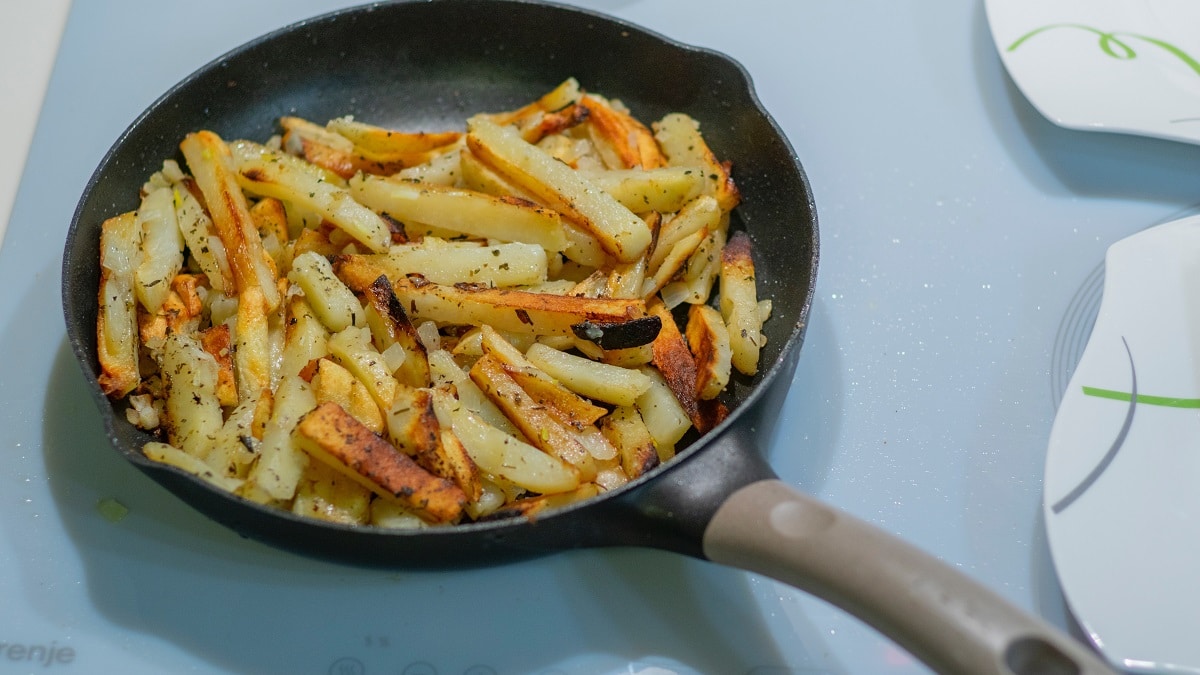
Nutritionists use the word “calories” to mean the amount of energy in food and drink.
Scientists formally define a calorie as the heat needed to increase the temperature of a unit amount of water by a degree Celsius.
There are two related definitions of the calorie, namely, the small and the large Calorie.
The small calorie (cal) — also known as the gram calorie — is the heat required to increase the temperature of one gram of water by one degree Celsius.
The kilocalorie (kcal) — also known as the kilogram or large Calorie — is the heat required to increase the temperature of one kilogram (2.2 pounds) of water by one degree Celsius.
One kilocalorie is the same as 1,000 calories.
Calories in nutrition
Our bodies break down (or metabolize) the food we eat to release energy needed to perform essential functions. For instance, we metabolize carbohydrates and fats to generate the mechanical energy that powers our muscles when walking, jogging, or doing strength training exercises.
We also burn calories while sitting quietly watching TV or sleeping at night. Some of the energy from the food we eat supplies the heat to warm our bodies.
Nutritionists measure the total energy released from the metabolism of carbs and fats in calories.
Our bodies can also derive energy from protein. Thus, zero carb but high protein foods, such as eggs, are also calorie-dense. Bananas are higher in carbs and sugars than eggs but lower in energy due to lower fat, higher water, and higher fiber contents.
People trying to lose weight include low calorie foods in their diets. Many vegetables, nuts, and fruits, such as apples, are recommended for weight loss diets because they have low energy contents.
Fats yield the most calories. A gram of fat contains about 9 calories, while a pound of human body fat (adipose tissue) about 3500 cal. A gram of protein and carbs each yield 4 cal.
You may learn how to use carb, protein, and fat content information to calculate total calories in food here.
For convenience, nutritionists often use the kilocalorie to measure the amount of energy in food and drink. Note that nutrition fact labels use the kilocalorie and large Calorie (uppercase C) interchangeably.
Although the energy content information on food labels is typically in kilocalories or Calories (Cal), nutritionists often write “calories” (with a small c) as equivalent to kilocalories or Calories.
Physical scientists also use the joule and kilojoule to measure energy.
For instance, physiscists estimate that the amount of energy released when 1kg of uranium undergoes fission is about 8.2 x 1013J.
You can convert the value in joules to kilocalories by multiplying with 2.390 X 10-4 (see conversion factors below).
(8.2 x 1013J) *(2.390 X 10-4)=1.960 X 1010 kilocalories ≈20 billion kilocalories
1 calorie = 4.184 joules;
1 Calorie (or kilocalorie) = 4184 joules;
Conversely, 1 joule = 0.239006 calories;
1 joule = 2.390 X 10-4 kilocalories.
How many calories do you need daily?
An average adult male needs about 2,500 kcal a day to maintain body functions, while the average woman needs about 2,000 kcal.
However, individual needs vary with age, health, body size, genetics, and level of physical activity. Children generally need less but active teenagers and young adults need more. Men also need more than women, and teenage boys more than girls.
People who are physically active, such as professional athletes, need more calories than sedentary individuals.
Studies have shown that even moderate physical movements, such as casual leg movements and fidgeting while sitting, may significantly add to daily energy expenditure and thus daily calorie requirement.
Overweight and obesity
Overweight and obesity are caused primarily by an imbalance between calories consumed and the calories the body uses or “burns.” When you eat more calories than you need, the excess accumulates in your body as fat. Fat accumulation over time leads to weight gain, overweight, and eventually obesity.
However, you can avoid weight gain by calculating your maintenance calories and limiting your daily intake to the calculated value. Maintenance calories are the calories you need to balance energy intake and energy expenditure to keep a constant body weight.
You are likely to eat more calories than you need if you eat foods containing empty calories.
Empty calories refer to added sugar and solid fats that contribute to energy intake and make food tastier without providing nutrients, such as vitamins and minerals.
Examples of foods containing empty calories include candies, sweets, and sugar-sweetened drinks, such as sodas.
People who live a sedentary lifestyle are also susceptible to overweight (BMI equal to 25 and less than 30) and obesity (BMI equal to 30 or higher) because they are more likely to burn fewer calories than they consume.
Most weight loss diet plans, including paleo diets, keto diets, and carb cycling, focus on restricting energy intake. However, restriction is not always effective for weight loss because several other factors, including genetic, physiological, emotional, psychological, and environmental factors, play roles in obesity.

